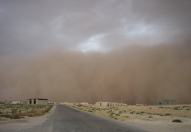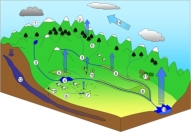Prof. Jason P. Evans
Climate Change Research Centre
University of New South Wales









Coupled atmospheric and land surface dynamics over South East Australia: A review, analysis and identification of future research priorities.
Evans, J.P., A.J. Pitman and F.T. Cruz
International Journal of Climatology, 31, 1758-1772, 2011. Abstract
The southeastern Australian climate and climate variability is driven primarily by large-scale climate
dynamics. How these dynamics translate into local effects is influenced by the nature of the landscape, the vegetation, soil
moisture, fire, snow, irrigation and orography. This local land-atmosphere coupling can enhance or moderate the large-scale
dynamics and have significant influences locally and regionally. This paper reviews the state of knowledge of the coupled
land-atmosphere dynamics over southeast Australia and identifies the challenges for future research. Relevant processes
are investigated and if possible their importance to regional climate is identified. Many coupled land-atmosphere dynamic
processes, identified as important in the Northern Hemisphere studies, remain to be studied in southeast Australia. This
represents an important priority for Australian research because this will establish their role in future changes in regional
climate over Australia. However, this also represents a significant international priority because the very high natural climate
variability in the region provides a laboratory to examine how coupled land-atmosphere dynamic processes may change in
other regions if global warming increases the range of natural variability.
Key Figure Figure 2: Schematic of the main interactions between the land surface and atmosphere. The land surface effects are contained within the dashed box. The albedo determines the net radiation (Rnet) reaching the surface. The state of the vegetation and soils determines the partitioning of this energy between latent and sensible heat, referred to as the EF. The latent and sensible heat release determines the characteristics of the PBL which impacts the growth of clouds and the advection and mixing of both clouds and aerosols. This figure is available in colour online at wileyonlinelibrary.com/journal/joc |
|